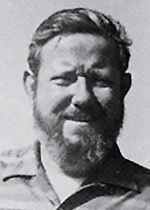The Coffin Cure: Why Vaccine Regulation Matters

Sociologists of science and technology take science fiction very seriously. Although often dismissed as a cheap literary form, it represents an important way in which contemporary societies try to think about and shape their futures. In this respect, it stands alongside more ‘respectable’ literary forms like modelling or scenario planning. Science fiction emerges alongside modern science and develops in parallel with it, as a commentary on its tropes and visions. Indeed, one of my projects sacrificed to the current emergency was a study of what colleagues and I have come to call ‘social precognition,’ the idea that STEM discoveries are necessarily anticipated by creative artists, like the authors of science fiction. Laboratory studies can only discover what has already been imagined.
Traditionally, science fiction has tended to focus on the hard sciences – the physics and engineering of rockets, interplanetary travel, and interstellar warfare. As Gene Roddenberry, the originator of Star Trek, once commented, the plots are often basically those of the Western movie translated into narratives of space and time. There are, of course, exceptions – Brave New World is probably the best known investigation of biology, while much recent feminist science fiction has taken this further in exploring how far gender is essential rather than social.

Medicine is more rarely the focus of the story, which makes the body of work by Alan E. Nourse (1928-92) of particular interest. Nourse was a U.S. physician who used science fiction as a way to comment on contemporary issues in medicine, health care and society. His most substantial book is probably Star Surgeon, which is founded on the premise that access to an intergalactic economic and political union depends upon being able to offer some unique product or service. Earth’s only comparative advantage lay in medicine – most of the rest of the galaxy had not been as obsessed with health and illness and did not develop this service to the same degree. The planet had effectively been turned into a giant hospital run by a medical elite. The book follows the early career of the first non-human to graduate from an Earth medical school. As such, Nourse is using the genre to comment on the experiences of the first Black students to graduate from historically white medical schools and to attempt to make their way within the profession. His protagonist suffers a series of racial slights before becoming accepted as competent, a status that the novel’s final twist reveals to be of more than personal importance.
It is, however, one of Nourse’s short stories that is particularly relevant to our present situation. The Coffin Cure was originally published in 1957. The title plays on words in at least three respects. The research team leader is one Dr. Chauncey Coffin, who develops a vaccine that protects against the common cold and its associated coughs but becomes a victim of medical hubris. He is rescued to some extent by the research fellow whose idea has been appropriated and credited only as the et al in the scientific paper where the results are presented.
The vaccine trials have been rushed to get ahead of a competitor. Nevertheless, the public response and demand for the vaccine are overwhelming:
“Of all the ailments that have tormented mankind through history, none was ever more universal, more tenacious, more universally miserable than the common cold…even the grisly memory of the early days of the Salk vaccine had not prepared them for the mobs of sneezing, wheezing, red-eyed people bombarding them for the first fruits.”
As was customary at the time, the research team were the first to use the vaccine, on themselves, along with 600 students at their university.
This also meant that the research team were the first to experience the unexpected effects. Six months after vaccinating himself, Philip, the research fellow, wakes up one morning and discovers that the world stinks – unbearably. Humanity has become so used to having its sense of smell buffered by continual low-level infection from the common cold that it cannot stand the unfiltered sensation. The lab team slowly realize that they will need to find a way of reinfecting humanity – 600 students are laying siege to them and 15 million recipients of the vaccine will not be far behind. Coffin collapses with nightmares about being lynched. The postdocs come up with a solution, which, unfortunately, seems to produce a common cold from which no-one can recover…and further research is needed!
This is, of course, a work of fiction, although there are elements that recall the character of Jonas Salk, and of the Cutter incident when the roll-out of the first-generation vaccine based on inactivated polio virus actually infected 40,000 children, leaving 200 with some degree of paralysis and killing 10. However, it is a reminder that science is a competitive enterprise that is not driven purely by humanitarian concerns, and that there are good reasons why regulation of vaccines is particularly thorough. Politicians might want to have achievements to announce ahead of elections or seasonal festivals. Even Phase III trials do not, though, guarantee complete safety – the history of vaccines is littered with harms that only emerged when they had been delivered to millions of people rather than to a few thousands.
There will, no doubt, be strong pressure for rapid, universal, access to any COVID-19 vaccine. The story of Dr Coffin and his team might help to remind us why this should be resisted.


























































































